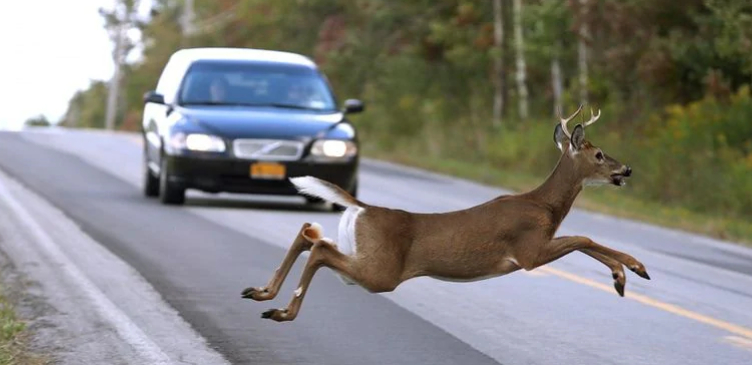Did you know that North Carolina is a High Risk Deer Collision State? It is especially at this time of the year (the Fall) when the Deer rut is occurring.
Colliding with these animals is potentially fatal for passengers and is likely to cause significant damage to your car. Here are some suggestions for avoiding collisions in the first place.
Drive at a safe speed.Do not speed when you are driving through deer country. You’ll still arrive if you go more slowly and you’ll have more time to avoid an animal if you spot it. Wildlife experts have recommended 90 kph/55 mph as a suitable speed for wildlife zones in good weather conditions, as it provides you with some reaction time to stop.
Drive defensively.Be prepared to take evasive action, which includes being able to quickly slow down, brake suddenly or turn down blinding headlights. Drive so that you are able to stop within the space of your headlights; practice this in a safe area if you don’t know how fast this is for your vehicle. Make sure your seat belt is on and check that all passengers are wearing theirs as well.
Keep an eye out.Actively scan the sides of the roads as you drive for any signs of wildlife. If you have passengers, get them involved but ask them not to shout out as this is very startling and can cause the driver to react incorrectly. Ask them to gently tell you that they see deer lurking about. Look on the road sides, the shoulders, down into ditches (they love the grass there), median strips, intersecting roads, on the road itself and try to spot any signs of movement, flashes of eyes or body shapes.
Be especially wary at sunset and sunrise.Deer and moose seem to move most in the hours around sunset to midnight and again around dawn. These are also the hardest times for our eyes to adjust to the light (it’s neither completely dark nor properly light), so we find it more difficult to see well.
Slow down when other cars are behaving differently.If you see flashing lights (hazard or headlights), hear tooting horns or see people waving madly about, slow down and be ready to stop! Of course, if a car stops suddenly ahead of you, you should also stop or at least slow right down. In these situations, the other cars may well have stopped because animals are already crossing the road ahead of you.


